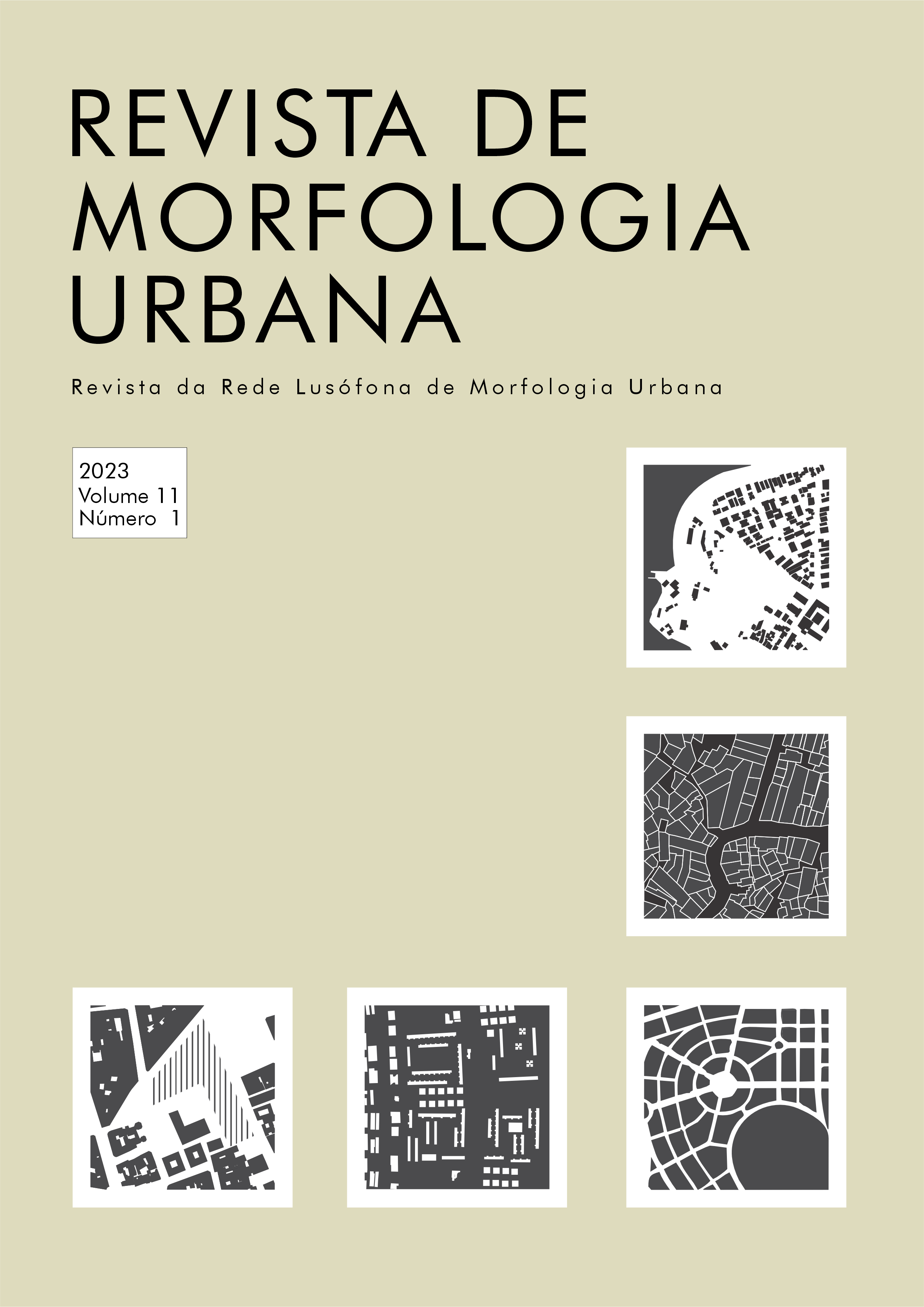Abstract
The paper consists of a configurational analysis to understand the urban expansion associated with the phenomenon of polynuclearization in the Itapema-Porto Belo system, located on the coast of Santa Catarina/Brazil, which has witnessed demographic growth resulting from the intense touristification of the last decades. If, on the one hand, the landscape is the driving force of urbanization and economic development, on the other hand, it suffers from the effects of predatory tourism, real estate speculation and urban spreading. Under a morphological approach, it is intended to understand how urbanization, read through a configurational perspective and stimulated by touristification, affected the dynamics of the existing centralities in the settlement. For that, the centralities are evaluated at four levels: urban/morphological active center, traditional center, subcenters and specialized centers. The research is supported by the Theory of Social Logic of Space (Space Syntax), by assuming the city as a system of interdependencies, so that changes in parts will imply changes in the whole. The results obtained for the urban system, in its configurational reading, indicate the existence of a notorious phenomenon of polynuclearization in the Itapema-Porto Belo system, where centralities of different scales and configurations present specific and hierarchical functions in the urban fabric.References
Castells, M. (1983) A questão urbana. São Paulo: Paz e Terra.
Correa, R. L. (2004) O espaço urbano. São Paulo: Ática.
Hillier, B. (1996) Space is the machine. Londres: Cambridge University Press.
Hillier, B.; Hanson, J. (1984) The social logic of space. Londres: Cambridge University Press.
Holanda, F. (2002) Espaço de exceção. Brasília: EdUnB.
Holanda, F. (2012) “Uma ponte para urbanidade”, Revista Brasileira de Estudos Urbanos e Regionais, [s.l.], v. 5, p. 59-76.
IBGE – Instituto Brasileiro de Geografia e Estatística (2021) Estimativas populacionais de 2021. Rio de Janeiro: IBGE.
Kohl, D. H. B. (1987) Porto Belo: sua história e sua gente. São José: Editora Canarinho.
Krafta, R. (2014) Notas de aula de morfologia urbana. Porto Alegre: Editora da UFRGS.
Lefebvre, H. (1999) A revolução urbana. Belo Horizonte: Editora UFMG.
Lynch, K. (1997) A Imagem da cidade. São Paulo: Martins Fontes.
Maas, W.; Rijs, J.; Vries, N. (eds.) MVRDV (2005) Costa ibérica: upbeat to the leisure city. Barcelona: Actar.
Maricato, E. (1997) Metrópole na periferia do capitalismo. Petrópolis: Vozes.
Martins, J. C. F. (2014) “Da urbanização turística à metropolização sazonal no Algarve Litoral 1960/2013”. Tese de Doutorado em Sociologia. Lisboa: Faculdade de Ciências Sociais e Humanas, Universidade Nova de Lisboa.
Mascarenhas, G. (2004) “Cenários contemporâneos da urbanização turística”, em Seminário Internacional Visões Contemporâneas Turismo/Lazer e Revitalização, 2, Rio de Janeiro. Anais... Rio de Janeiro: FAU/UFRJ.
Medeiros, V. A. S. (2013) Urbis brasiliae: o labirinto das cidades brasileiras. Brasília: EdUnB.
Neves, J. (2007) “Evolução do uso e da cobertura do solo no setor norte da península de Porto Belo (SC)” (1938-2000). Dissertação em Geografia. Florianópolis: Programa de Pós-Graduação em Geografia da Universidade Federal de Santa Catarina.
Pinho, L.; Reis, A. F. (2010). “Estudo do processo de crescimento urbano-turístico de itapema, no litoral catarinense”, em: Relatório de Pesquisa, Florianópolis: CNPQ/UFSC.
Reis, A. F. (2012). Ilha de Santa Catarina: permanências e transformações. Florianópolis: Editora da UFSC.
Rubio, M. V. (1986). “Turismo y território: ideas para una revisión crítica y constrictiva de las prácticas espaciales del turismo”, em: Estudios Turísticos, nº 90, p 47-57.
Solà-Morales, M. (1997) Las formas de crecimiento urbano. Barcelona: Edicions UPC.
Somekh, N. (1997). A cidade vertical e o urbanismo modernizador. São Paulo: Studio Nobel.
Sugai, M. I. (2002). “Segregação silenciosa: investimentos públicos e distribuição sócio-espacial na Área Conurbada de Florianópolis”. Tese de Doutorado em Arquitetura e Urbanismo. São Paulo: FAUUSP.
Vera, J. F.; Palomeque, F. L.; Marchena, M. J.; Aníon, S. (1997). Análisis territorial del turismo. Barcelona: Ariel Geografía.
Villaça, F. (1998). Espaço intraurbano no Brasil. São Paulo: Studio Nobel.
Yázigi, E. (2001). A alma do lugar: turismo, planejamento e cotidiano em litorais e montanhas. São Paulo: Contexto.

This work is licensed under a Creative Commons Attribution 4.0 International License.
Copyright (c) 2023 Igor Tadeu Lombardi de Almeida, Valério Augusto Soares de Medeiros

